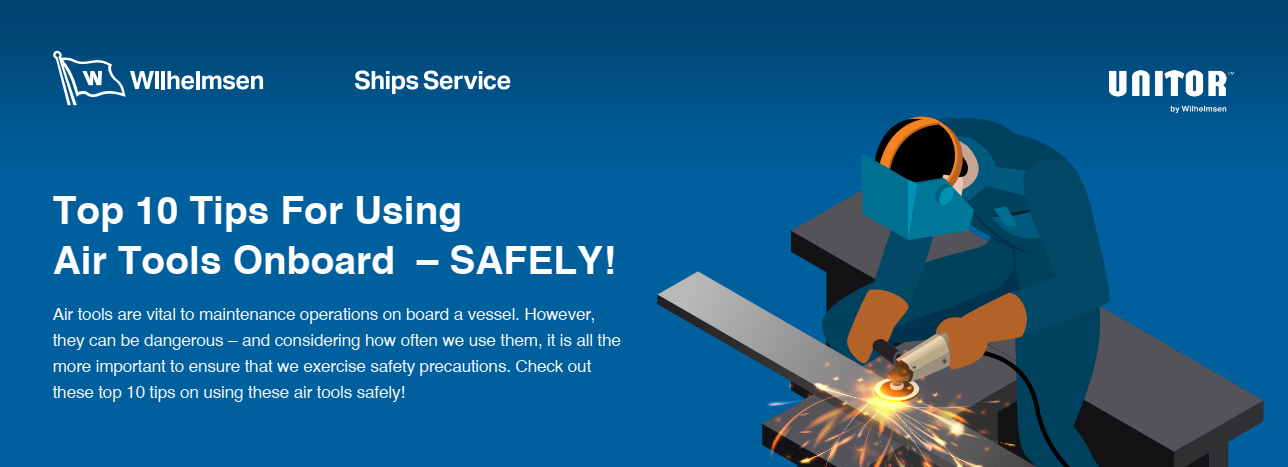Top 10 Tips For Using Air Tools Onboard Safely
Wilhelmsen insights
|
Chris Teoh, Senior Product Manager – Welding & Repair

SELECTION
TIP 1
Only use it for its intended purpose – follow the instruction manual and never exceed the recommended working pressure. Use only approved consumables, check their expiry dates, and check that the RPM speed matches the air tools’ RPM specifications.
TIP 2
Use low-vibration air tools to prevent Hand and Arm Vibrations Syndrome (HAVS). Also, use ATEX-certified air tools for work in EX Zone environments to avoid sparks that can cause fire and explosions.
ASSEMBLY
TIP 3
Switch off all air supply, valves, and bleed pressure before making hose connections or changing your air tools.
SAFETY PRECAUTIONS & PPE
TIP 4
Before using any of your tools, make sure that all parts are functional and working together. Using a damaged or malfunctioning tool can
lead to severe incidents!
TIP 5
Always wear the appropriate PPE gear to protect yourself, especially around your eyes, face, and ears. Compressed air can project debris at high speed, and you don’t want to get injured!
OPERATIONS
TIP 6
Always focus on your task while using the tool – any careless movement can lead to a serious injury. Do not remove or modify safety devices!
TIP 7
Do not point the air tool at another person or your clothing as it can cause serious injury even at low pressure!
TIP 8
Keep all air lines or hoses away from high-foot traffic to avoid tripping hazards.
AFTER-USE CARE & MAINTENANCE
TIP 9
Keep all your hoses, air tools and accessories clean and in optimal condition – wipe off grease and oil every time after usage.
TIP 10
Store rubber hoses away from direct sunlight and heat.
